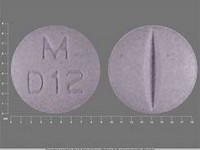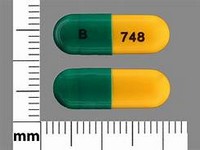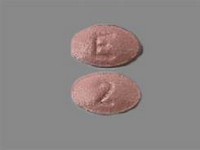Cyclopenthiazide

Cyclopenthiazide
CLINICAL USE
Hypertension Heart failure OedemaDOSE IN NORMAL RENAL FUNCTION
Oedema: up to 500 mcg once dailyHeart failure: 250 mcg – 1 mg once dailyHypertension: 250–500 mcg once dailyPHARMACOKINETICS
DOSE IN RENAL IMPAIRMENT
GFR (mL/MIN)
DOSE IN PATIENTS UNDERGOING RENAL REPLACEMENT THERAPIES
IMPORTANT DRUG INTERACTIONS
Potentially hazardous interactions with other drugsAnalgesics: increased risk of nephrotoxicity with NSAIDs; antagonism of diuretic effectAnti-arrhythmics: hypokalaemia leads to increased cardiac toxicity; effects of lidocaine and mexiletine antagonisedAntibacterials: avoid administration with lymecyclineAntidepressants: increased risk of hypokalaemia with reboxetine; enhanced hypotensive effect with MAOIs; increased risk of postural hypotension with tricyclicsAnti-epileptics: increased risk of hyponatraemia with carbamazepineAntifungals: increased risk of hypokalaemia with amphotericinAntihypertensives: enhanced hypotensive effect; increased risk of first dose hypotension with post-synaptic alpha-blockers like prazosin; hypokalaemia increases risk of ventricular arrhythmias with sotalolAntipsychotics: hypokalaemia increases risk of ventricular arrhythmias with amisulpride or sertindole; enhanced hypotensive effect with phenothiazines; hypokalaemia increases risk of ventricular arrhythmias with pimozide – avoid concomitant useAtomoxetine: hypokalaemia increases risk of ventricular arrhythmiasCardiac glycosides: increased toxicity if hypokalaemia occursCiclosporin: increased risk of nephrotoxicity and possibly hypomagnesaemiaLithium: excretion reduced, increased toxicityADMINISTRATION
Reconstition
–Route
OralRate of Administration
–Comments
–OTHER INFORMATION
Monitor for hypokalaemia Acts within 1–3 hours, peaks in 4–8 hours and lasts up to 12 hours
See how to identify renal failure stages according to GFR calculation
See how to diagnose irreversible renal disease
Home








